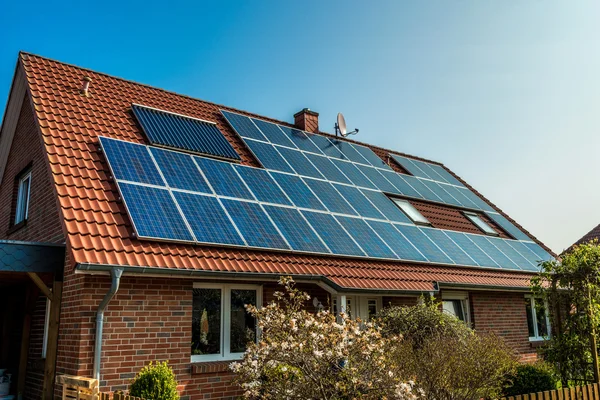Another effective green energy option for homeowners is using a solar energy system. Solar energy systems typically use photovoltaic (PV) panels which harness solar energy, and turn it into electricity. PV systems use large groups of solar cells, called solar panels. Solar panels can be installed on roofs or at ground level on a rack.
Solar power is able to provide all, or a portion of a household’s energy needs. Excess solar energy can also be stored in batteries. This allows PV systems to provide power for homes even during night, when there is a lack of sunlight. Solar panels are also built to withstand any natural damage, including ultraviolet exposure.
PV systems can cost anywhere from $15000 to $35000, and this cost is before tax credit. While it is a large range, an average system integration may cost closer to $20000, and this would be enough to provide the entirety of a household’s energy consumption. PV systems installed between 2022-2032 are eligible for 30% tax credit.
Solar water heating systems store water in tanks, and use sunlight to heat the water, which is then pumped into the home. Solar water heating units require backup systems for when there is no sunlight, as the energy cannot be stored for extended periods. Systems typically only need maintenance two or three times in a decade.
Solar water heating systems can cost between $2500 to $8000. It is one of the cheapest green energy alternatives, albeit, not as complete of a replacement. Installations made between 2021 and 2032 are eligible for 30% tax credit.

